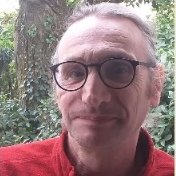Water Residence Times by Isotopic Techniques
A special issue of Water (ISSN 2073-4441). This special issue belongs to the section "Hydrology".
Deadline for manuscript submissions: closed (10 February 2022) | Viewed by 5579
Special Issue Editors
Interests: mineral induced pollution phenomena; raw materials; tectonics; structural geology; water quality; environmental monitoring; environmental pollution; geological mapping; field geology; environmental impact assessment; sedimentology
Interests: catchment hydrology; isotope hydrology; hydrochemistry; groundwater hydrology; surface–subsurface interactions; landslide hydrology
Interests: hydrogeology; hydrochemistry; tracers; isotopes; fractured and porous media; groundwater
Special Issues, Collections and Topics in MDPI journals
Special Issue Information
Dear Colleagues,
In hydrological and hydrogeological studies worldwide, mean residence time (MRT) and residence time distribution (RTD) assessment have demonstrated to be a significant tool for unravelling flow-paths at both catchments and aquifers scales. With reference to both surficial and groundwater bodies, MRT and RTD allow better understanding the mechanisms of recharge, exchange, and transfers of water molecules within the water cycle, allowing hydrological and hydrogeological conceptual models to be more representative of the natural reality. In the end, this information is extremely useful for pollution vulnerability and risk planning. As an example, low values of MRTs suggest that monitored surface water and groundwater are prone to contamination, water molecules’ flow-paths being reduced (i.e., the subsequent landuse planning must be as strict as possible). By contrast, higher values of MRTs indicate that monitored water has travelled for a long time prior to being sampled, and subsequent proneness to contamination is somehow reduced (i.e., planning activities can be less stringent) and further geological risks could arise, such as land subsidence or reservoir exhaustion. To be effective, the selection of the isotopes to be used must be accurate and reasoned before the investigation campaign. The purpose of this Special Issue is therefore to collect a current picture of the use of such tools in hydrological and hydrogeological studies together with uncertainties and problems that may be related.
Manuscripts regarding all recent advances in the characterization of RT, including new sampling strategies (e.g., high-frequency isotope monitoring) or modeling approaches to capture RTD will be welcome. Some examples of challenging questions are:
- How can global climate change affect MRT and RTD?
- How can RT knowledge help water quality management?
- How can we reduce uncertainties (e.g., multitracing)?
- How can groundwater–surface water interactions alter RT in both water bodies?
Dr. Giovanni Martinelli
Dr. Vincent Marc
Dr. Federico Cervi
Guest Editors
Manuscript Submission Information
Manuscripts should be submitted online at www.mdpi.com by registering and logging in to this website. Once you are registered, click here to go to the submission form. Manuscripts can be submitted until the deadline. All submissions that pass pre-check are peer-reviewed. Accepted papers will be published continuously in the journal (as soon as accepted) and will be listed together on the special issue website. Research articles, review articles as well as short communications are invited. For planned papers, a title and short abstract (about 100 words) can be sent to the Editorial Office for announcement on this website.
Submitted manuscripts should not have been published previously, nor be under consideration for publication elsewhere (except conference proceedings papers). All manuscripts are thoroughly refereed through a single-blind peer-review process. A guide for authors and other relevant information for submission of manuscripts is available on the Instructions for Authors page. Water is an international peer-reviewed open access semimonthly journal published by MDPI.
Please visit the Instructions for Authors page before submitting a manuscript. The Article Processing Charge (APC) for publication in this open access journal is 2600 CHF (Swiss Francs). Submitted papers should be well formatted and use good English. Authors may use MDPI's English editing service prior to publication or during author revisions.
Keywords
- Residence times
- Stable and radioactive isotopes
- Hydrogeology
- Young water fraction
- Contaminant
- Land subsidence
- Storage selection functions
- Lumped parameter models
- Particle tracking
- Catchment hydrology







